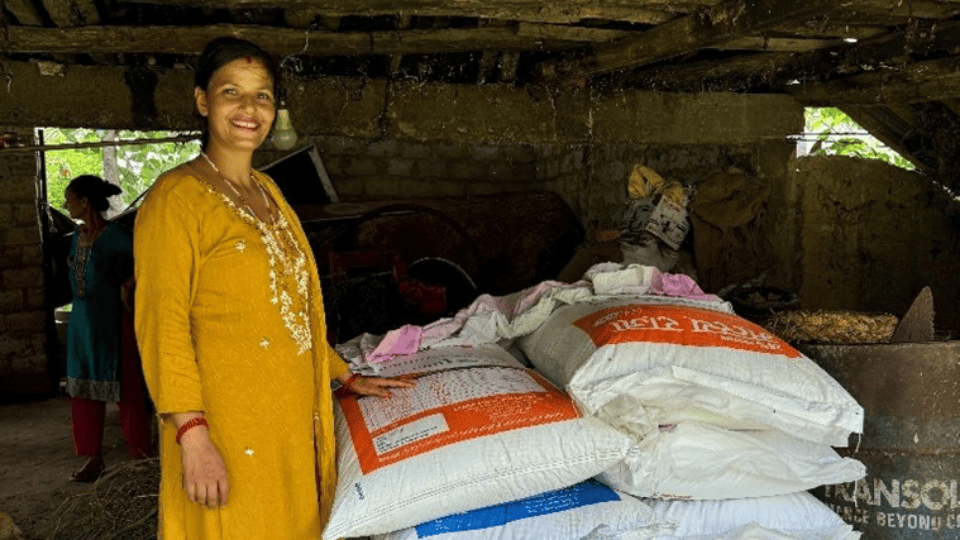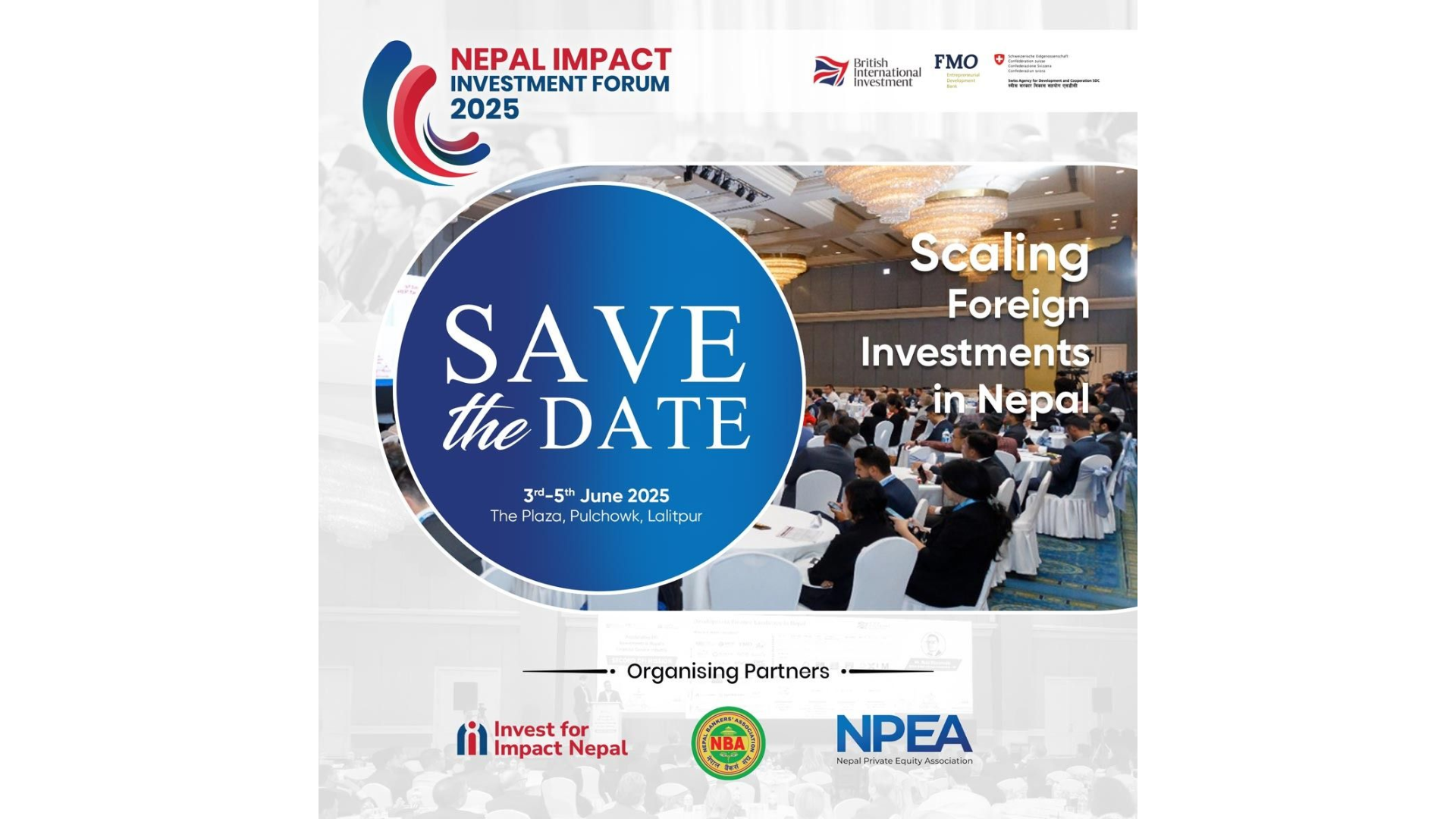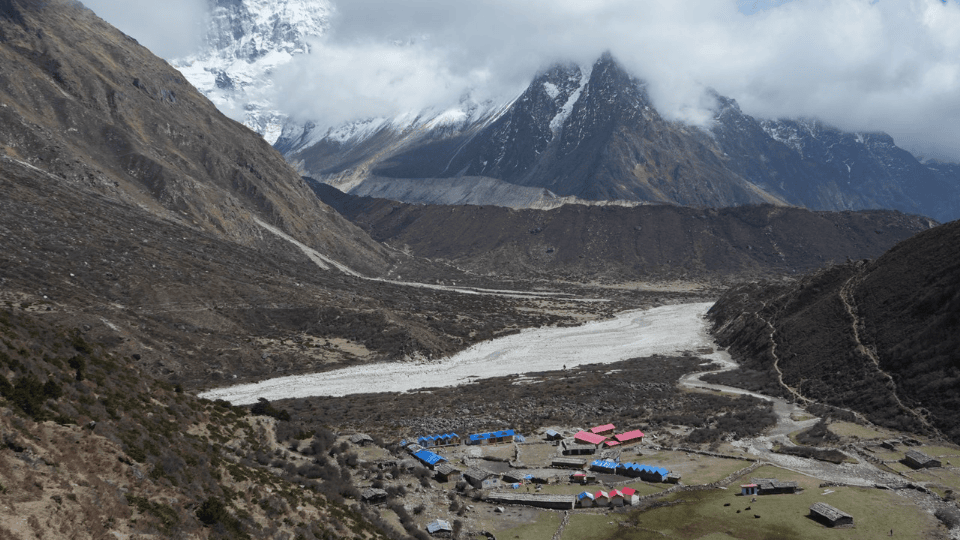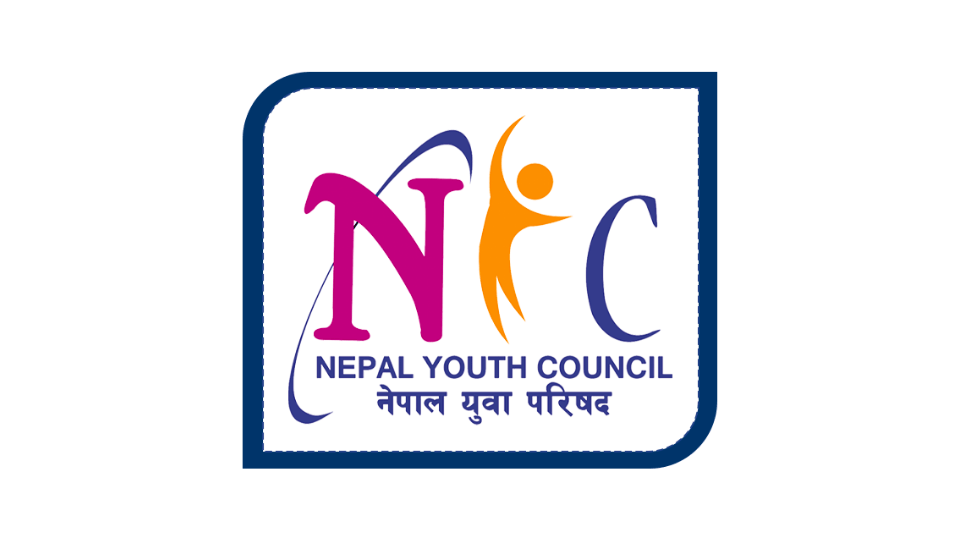Nepal’s fish sector has witnessed significant growth in recent years, with production rising steadily over the past few decades. According to a report by the Central Fisheries Promotion and Conservation Centre, under the Ministry of Agriculture and Livestock Development, Nepal’s total fish production was 62,897 tonnes (62,897 metric tons) in the fiscal year 2016/17, which increased to 83,623 tonnes (83,623 metric tons) by 2020/21. This growth can largely be attributed to the rising demand for fish, fuelled by increased public awareness of its health benefits. As more people recognise the nutritional value of fish, consumption has surged, driving the sector’s expansion.
Despite the growth, several sectoral challenges persist in the fish sector which include the lack of quality commercial fish feed in the local market, limited awareness among fish farmers about the benefits of using fish feed for optimal fish growth, and their insufficient knowledge regarding the correct application of such feed. In addition, the fish sector in Nepal is predominantly male dominated, with women making up only 33 percent of the total smallholder farmers involved, primarily concentrated only on production, according to data published in a report by the SAARC Agriculture Centre (SAC).
To address these issues, the UK’s Foreign, Commonwealth & Development Office (FCDO) funded the CASA Programme, which is implemented by Swisscontact in Nepal, to partner with Annapurna Maccha Dana Udhyog. The partnership organised demo-pond sessions in Provinces 2, 3, and 5 to promote smallholder adoption of commercial feed. CASA is helping enhance Annapurna’s product quality, improve price competitiveness, and strengthen the viability of locally produced fish feed. The demo pond showcases best practices in pond management, including proper feeding, water quality maintenance, and pond design for optimal fish growth.
The demo-pond sessions were successfully conducted in all three provinces. In Chhapiya Village, Siyari (Province 5), only three out of 41 participants were women. While women’s participation in the fisheries sector is often limited, it is notable that one of these women, Pushpa Bhattarai, took the training and turned it into a real success.
Meet Pushpa from Chhapiya
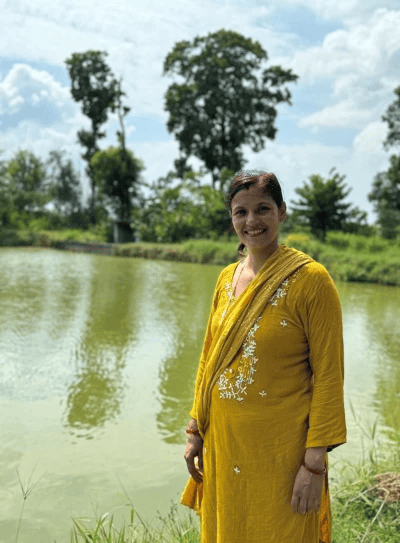
Pushpa Bhattarai is a permanent resident of Chhapiya Village, Siyari-5, Rupandehi District, which is particularly known for its fishery and aquaculture practices, with agriculture being the main livelihood for the local people of the village. As a mother of two daughters, she has been involved in the fishery sector for over 12 years. Her family owns a fishpond that spans 61,965 square feet (17 Katta), which is officially named Kabya Maccha Farm after her daughter, Kabya. In addition to fish farming, she cultivates vegetables and crops and raises livestock to support her family while managing her time with other household responsibilities and caring for her children.
Shift from Traditional to Contemporary Fish Feeding

Before attending the demo-pond session, Pushpa Bhattarai relied solely on bran, broken rice (Fulki), and wheat (Gahu) to feed her fish, unaware of more effective alternatives. After participating in the demo-pond session, she transitioned to feeding her fish with the Annapurna feed once a day after witnessing how tailored fish feed enhances fish health and growth. While financial constraints prevent her from feeding her fish more frequently, her understanding has greatly improved with the recognition that the commercial fish feed has a higher protein content than local bran and other alternatives, which are crucial for optimal fish growth—knowledge she lacked before.
Pushpa gets her fish feed from Shree Jal Devi Fish Production Co-operative Limited in Siyari-5, Banghusari, which has a formal agreement with Annapurna to serve as the distributor for three major rural municipalities in Rupandehi district: Siyari, Mayadevi, and Suddodhan. Pushpa is one of the co-operative’s members; of 327 members, only 30 are women. In addition to this, she is also in charge of overseeing the storage facility at the co-operative and is involved in distributing supplies to the fish farmers. Being associated with the co-operative has given her access to some discounts on the fish feed, although the amount is modest. Likewise, through her active involvement in the co-operative, she has been positioned as a leader within the village’s fish farming community, earning the admiration of her fellow farmers and showcasing her leadership abilities.

Hands-on learning through observation
The live session taught her about the benefits of fish feed, their correct usage, the importance of regular checks and maintenance of water quality to ensure optimal oxygen levels and temperature for fish health. She also learned how to identify common fish diseases, and about effective prevention and treatment strategies. Additionally, Pushpa discovered that using bran and household alternatives leads to higher water pollution, while fish feed causes less pollution, highlighting the importance of sustainable aquaculture practices that reduce environmental impact.

“The demo-pond session allowed me to acquire hands-on experience by observing appropriate fish-feeding practices up close.”- Pushpa Bhattarai
Enhanced motivation through increased income and confidence
Pushpa shares that when given Annapurna fish feed, the fish quickly come to the surface to eat, indicating that they enjoy the feed. This has allowed her to monitor their growth more effectively, as the fish’s behavior makes it easier to assess their sizes. She states that the fish growth she has experienced is noteworthy, even with just one use per day of fish feed, compared to when she relied entirely on bran and other household alternatives.
Pushpa emphasizes that Mr Pancham Lodh, the CASA-supported Junior Technical Assistant who conducted the demo-pond session, visited her fishpond regularly up until harvest, providing encouragement and boosting her confidence by observing that the fish were growing properly. Pushpa harvested her fish in November 2024, and sold them to a local fish trader, who distributes and sells fish across various municipalities in the Rupandehi district and nearby districts too.
By switching to feeding her fish with Annapurna feed at least once a day, she was able to double both her income and profit. Last year, by using bran and other household alternatives, she harvested 5 quintals of fish and earned NPR 100,000 (CHF 632.70). However, after switching to fish feed once a day, she harvested 10 quintals of fish and earned NPR 200,000 (CHF 1,265.40) in just six months. She also stresses that what is truly notable is that last year, she stocked nearly the same number of fish fingerlings in her pond as she did this time, yet the results in terms of size and weight have been significantly better this year compared to last year. This positive result encourages her to continue using fish feed, and she is confident that, with time, she will be able to feed her fish more than once a day.
Pushpa further shares that she noticed when using only bran, fish growth is slow, taking nearly a full year to reach harvest size, and many fish often die due to changes in weather and temperature during the process. In contrast, the use of fish feed allows the fish to grow and reach harvest size in just six months, making it even possible to complete two growth cycles within a year.
“Fish feed requires smaller quantities and produces less waste compared to bran. In contrast, bran requires larger amounts, takes longer for fish to grow, and sinks, causing increased water pollution, higher usage, and greater wastage, which ultimately leads to additional costs.”Pushpa adds to her experience after switching to Annapurna feed

Empowering women through knowledge and support
Pushpa takes pride in seeing her daughters learn modern fish-feeding practices from her, highlighting how the demo-pond has facilitated knowledge transfer across generations, ensuring long-term benefits. Her experience also demonstrates the empowering impact of supportive family dynamics and inclusive programs like the demo-pond, which have allowed her to make key decisions in fishery practices and engage with the co-operative. Pushpa, a role model in a male-dominated sector, believes that with similar support, other women in her village could participate, learn modern techniques, and pursue fish entrepreneurship, leading to increased productivity, income, and economic independence for both individuals and the community.
This work was originally published at CASA’s website. You can find the link here.

